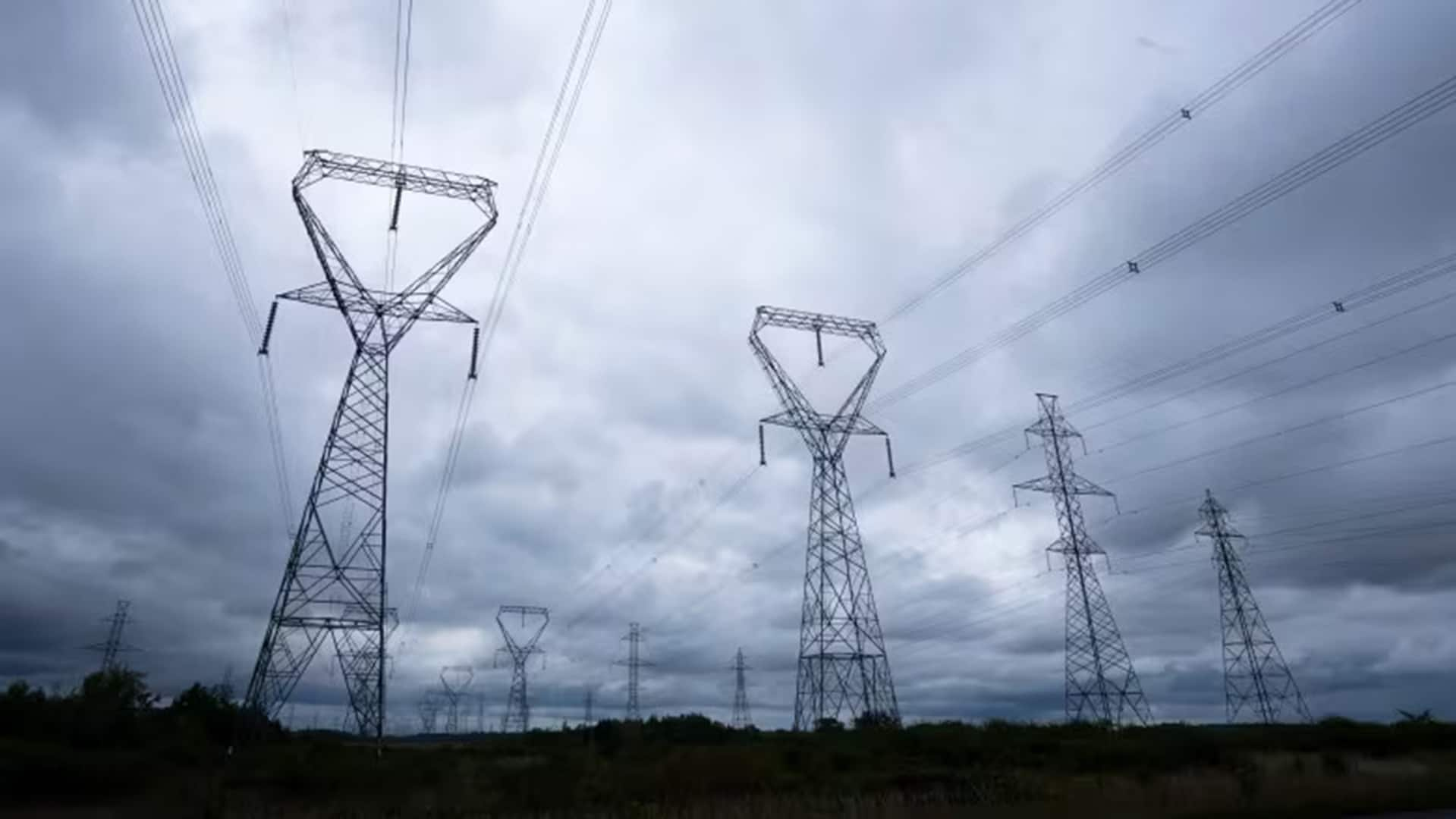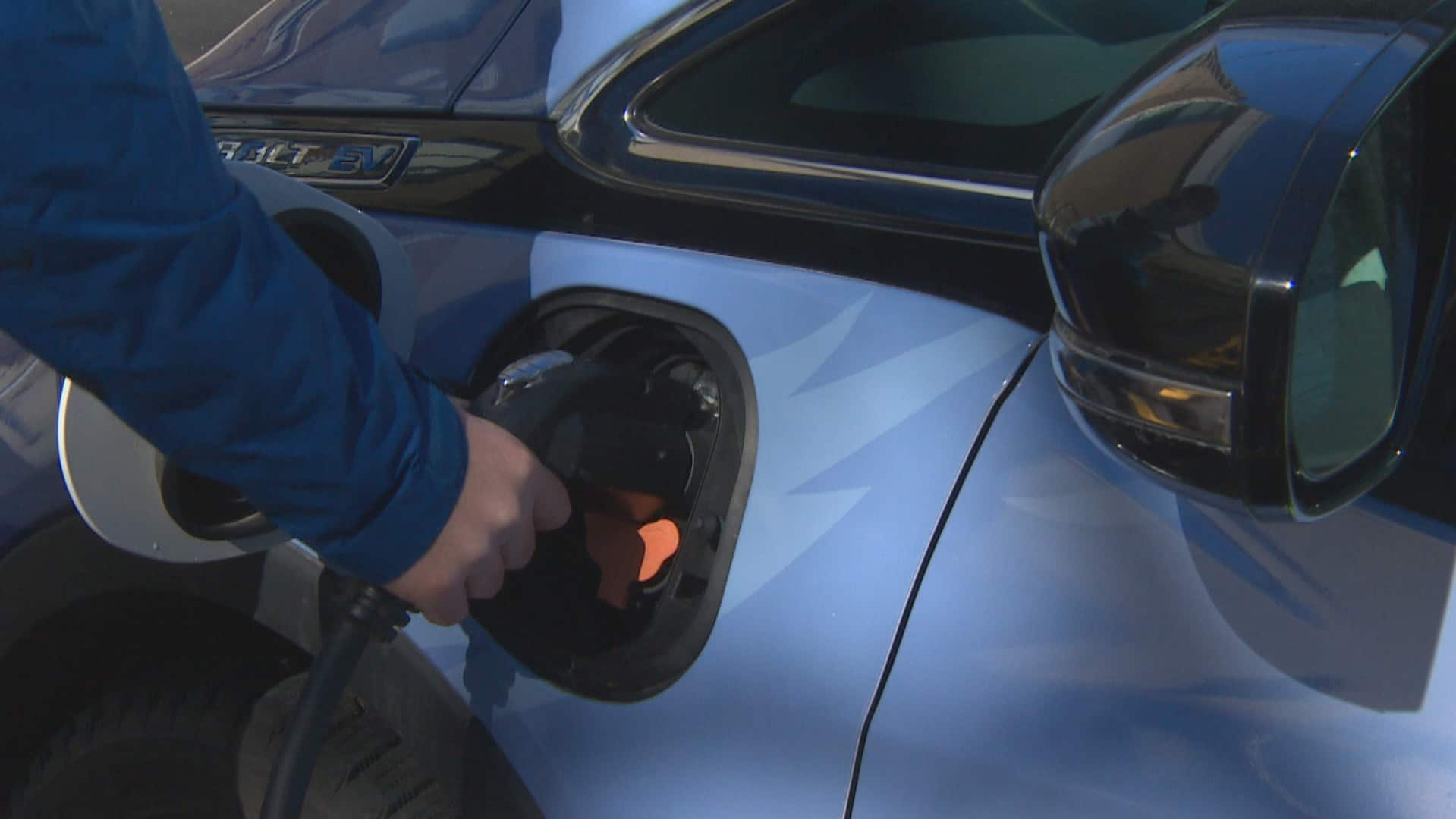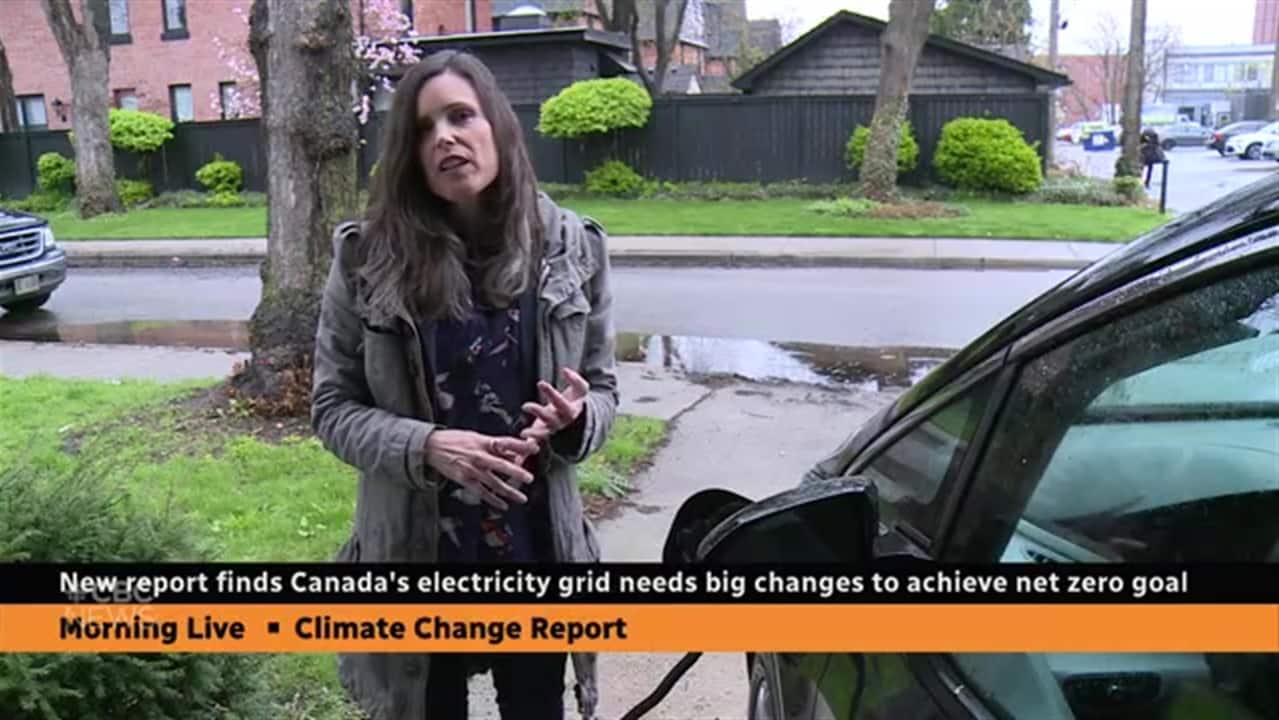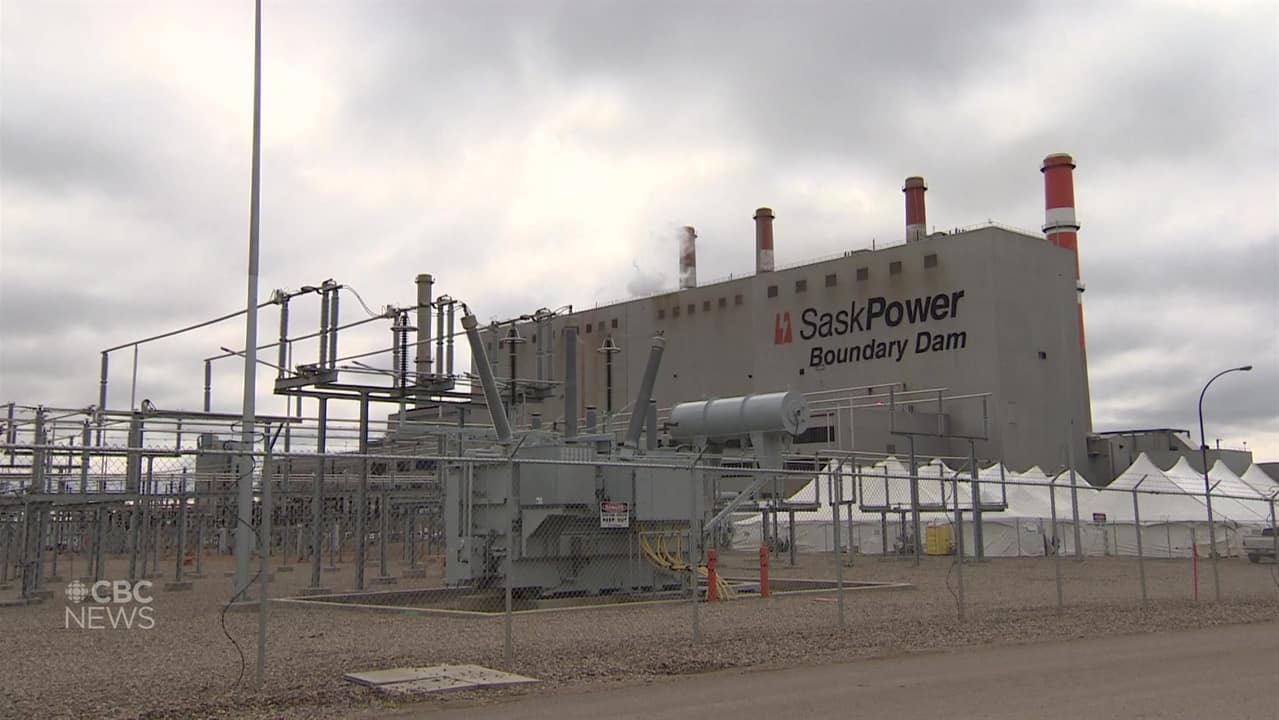The federal government is encouraging Canadians to change from fuel to electrical autos and from fossil gas heating to electrical warmth pumps as a part of Canada’s plan to achieve net-zero greenhouse fuel emissions by 2050.
That’s prompted loads of Canadians, together with CBC Information readers, to ask: received’t that break the grid? How will our electrical energy system deal with that additional load? And can going electrical elevate power payments for the typical Canadian?
Right here’s a more in-depth look.
The problem for our grid
Earlier this month, when the federal authorities introduced new laws to get Canada’s grid to internet zero by 2035, it stated its modelling exhibits greater than $400 billion is required to exchange growing older services and broaden era capability within the nation’s electrical grid. With out such investments, the federal government suggests, Canada could also be unable to answer the stress positioned on the system from electrical heating and cooling techniques, electrical autos and inhabitants and financial progress.
WATCH | Federal govt. releases street map for transition to net-zero energy by 2035:
The federal authorities says in a draft laws launched Thursday it has a plan to make Canada’s electrical energy grid cleaner, with the objective that it is going to be carbon impartial by 2035. However critics say this plan will drive up costs and presumably make electrical energy much less dependable.
Studies from the Worldwide Vitality Company and the Canadian Local weather Institute in 2022 discovered Canada would want to double or triple its electrical grid capability by 2050 to achieve its net-zero objective. It might additionally want extra battery storage and be nimble sufficient to regulate to peaks in demand from electrical autos and residential heating techniques. In any other case, dangers may vary from not assembly our local weather targets to energy outages and different reliability points.
The excellent news is that many individuals, together with the authors of the report, suppose it’s achievable.
“Making electrical energy techniques greater, cleaner and smarter is technically and economically possible,” the report stated.
We nonetheless have a while — up to now
Francis Bradley, president and CEO of Electrical energy Canada, which represents electrical utilities throughout Canada, stated that’s partly as a result of electrification of transportation and residential heating will probably be a gradual course of, and authorities targets make the expansion in demand considerably predictable.
“We aren’t going to go from no electrical autos to solely electrical autos,” he stated. “And even in 2036, there’s nonetheless going to be loads of automobiles on the street that aren’t electrical.”
He added that electrification and rising demand for electrical energy is already underway, and up to now, Canada’s system has been prepared.
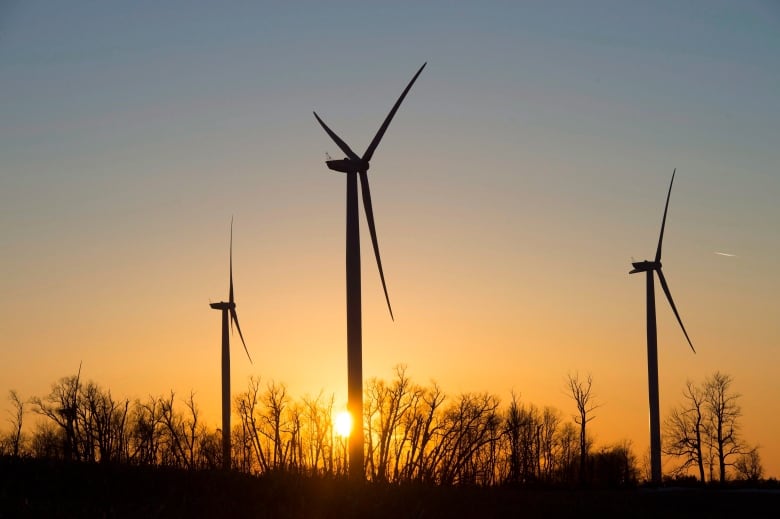
Rising our electrical energy system by the quantity that’s wanted might sound difficult, however to “double one thing over 25 years is definitely not that onerous,” he stated. “It’s progress of three per cent a yr. However it’s important to do it constantly each single yr.”
The Canadian Local weather Institute report estimated that so as to meet rising demand from electrification, Canada should, on common, develop system capability at a fee three to 6 instances sooner than it did previously decade, till 2050.
“The federal authorities’s 2035 deadline for reaching a net-zero electrical energy system leaves no room for delay,” it added.
WATCH | Alberta places pause on new renewable power initiatives:
The provincial authorities will inform Alberta’s utilities regulator to droop approvals for brand new renewable electrical energy initiatives whereas they research gaps within the present improvement guidelines. For extra context we’ve reached Evan Pivnick with Clear Vitality Canada.
The report says that performing early may considerably scale back prices by driving innovation, stopping stranded property and under-built techniques.
The affect of electrical warmth pumps
At present, how individuals warmth their properties varies rather a lot throughout the nation, and so will the affect of switching to electrical warmth pumps. In Quebec and Newfoundland and Labrador, for instance, a majority of properties depend on inefficient electrical baseboard heaters.
Brendan Haley, director of coverage analysis at Effectivity Canada, primarily based at Carleton College in Ottawa, stated if these have been switched to extra environment friendly warmth pumps, “we’d find yourself utilizing much less electrical energy” in these provinces.
Areas that rely closely on fossil gas heating proper now may see a rise in general electrical energy demand in the event that they decarbonize. For instance, Mario Chiarelli, a Toronto-based power effectivity guide, estimated that changing Toronto’s 650,000 pure gas-heated properties to best-in-class warmth pumps would double town’s electrical energy demand, a rise of about 5,000 megawatts.
However a 2021 research by Effectivity Canada discovered that if insulation was improved “pretty considerably” for Canada’s total constructing inventory, the nation’s buildings would truly use much less electrical energy, even when their heating techniques have been totally electrified.
“I’m not saying that there will probably be no want for extra electrical energy provide,” Haley stated, “but it surely actually factors towards constructing envelope enhancements being an enormous a part of the answer.”
The affect of EVs
A 2020 research commissioned by Pure Assets Canada discovered that primarily based on federal electrical car targets, EVs will eat 156.5 terawatt-hours of electrical energy per yr by 2050 — equal to 22.6 per cent of electrical energy consumed within the nation in 2020.
However electrical energy system planners surveyed for the research stated they weren’t frightened about that progress. As a substitute, they noticed EVs as “a enterprise alternative as a substitute of a threat or a vulnerability.”
That’s as a result of EVs retailer giant quantities of electrical energy and are usually versatile about after they cost, as they’re parked more often than not.
Lisa DeMarco, CEO and senior associate of Resilient LLP, a Canadian regulation agency centered on offering recommendation on local weather change and power, identified “most of the peak grid hours are usually not the height visitors hours.”
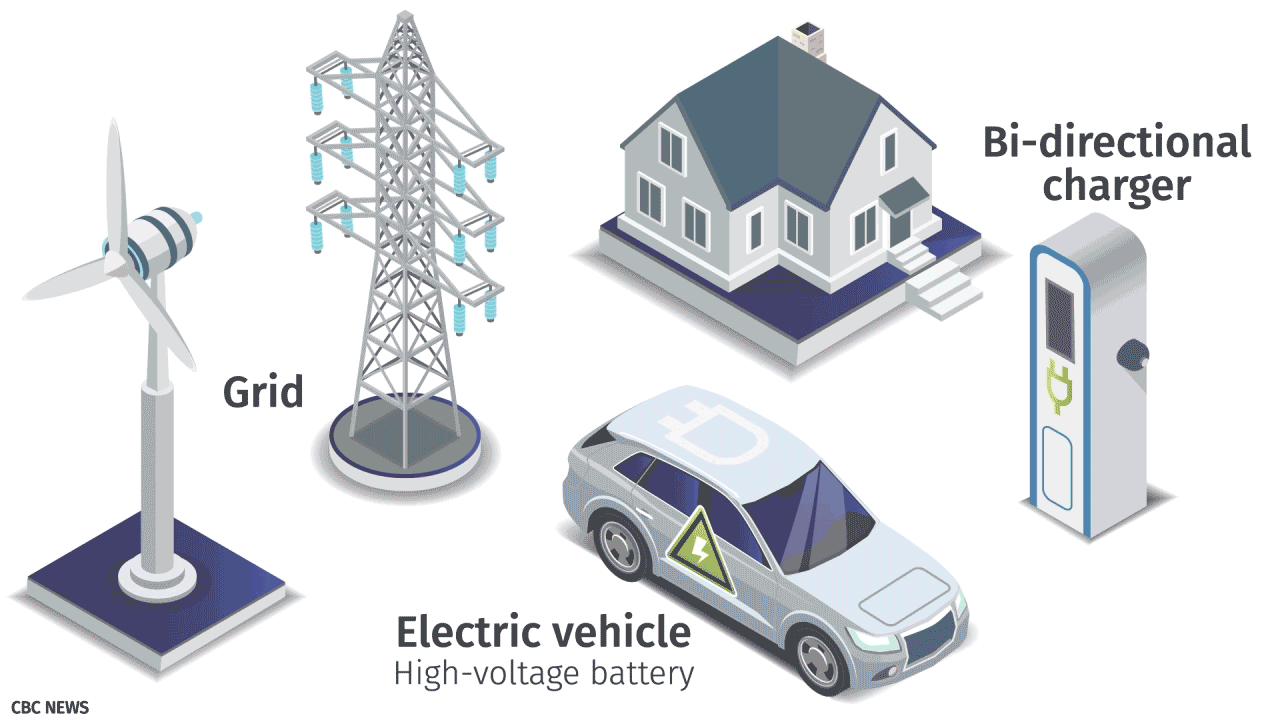
Extra new car fashions are additionally popping out with bidirectional charging, which may doubtlessly enable them to feed energy again into the grid when it’s wanted — one thing utilities say may very well be a “game-changing useful resource.”
How the position of the grid and its customers will change
Bradley says sooner or later, electrical energy customers received’t be shoppers, they’ll be “prosumers” — each drawing from the grid and feeding into it, from energy era units akin to rooftop photo voltaic panels and storage units akin to EV batteries.
WATCH | Enmax Energy reveals findings from new research on electrical autos:
Enmax says one technique to sustain with the rising electrical energy demand may very well be to supply decrease charges in off-peak hours. They not too long ago carried out a pilot venture providing monetary incentives to EV house owners who cost up at night time, and the corporate says it was successful. The CBC’s Colleen Underwood has the main points.
The pricing of electrical energy will in all probability be extra dynamic, altering with provide and demand so as to handle peaks, and know-how will assist clients take benefit.
“We are able to shift the timing of various calls for in a means that gives no inconvenience for households and even permits clients to begin promoting providers to the grid and getting paid for it,” Haley stated.
The Canadian Local weather Institute report says making the demand for electrical energy extra versatile will probably be a key element of creating the grid prepared for a net-zero future. “Most of the key flexibility applied sciences are commercially obtainable at present,” it added. “And their prices proceed to fall.”
Will the electrical transition drive up electrical energy costs?
Sure, stated Bradley. “There’s inevitably going to be some upward stress on the worth of electrical energy.”
However he says it is going to be offset by the actual fact Canadians will be utilizing fewer fossil fuels and subsequently spending much less on them.
DeMarco stated clients may additionally have the ability to reap the benefits of their elevated position within the grid.
“If you happen to’re getting paid a charge or feeding a few of your electrical power that you simply’re storing in your battery again into the grid at these excessive peak instances, [that] may truly lead to a internet buyer financial savings.”
WATCH | Demand for electrical autos drives want for energy system modifications:
Demand for electrical autos may change into a big burden on the facility system until modifications are made, notes a brand new report.
The Canadian Local weather Institute estimates that power prices for Canadians will decline by round 12 per cent by 2050, the yr Canada is meant to attain internet zero, as a result of decrease and fewer risky pricing for electrical energy in comparison with fossil fuels.
Nevertheless, its newer report notes that prices could also be inconsistently distributed throughout the nation, and could also be larger for Canadians who dwell in areas that presently rely closely on fossil gas era. They could additionally disproportionately hurt these with decrease incomes, and will undermine assist for the net-zero transition. It recommends that governments use public funds to defray the prices of electrical energy system investments for ratepayers.
Are Canadian governments and utilities doing what’s wanted?
Each Haley and DeMarco stated Canadian coverage makers are behind different nations and U.S. states in relation to planning for mass electrification.
DeMarco stated planning in Canada’s electrical energy system typically solely appears a couple of years into the long run, with out contemplating the long-term affect of rising excessive climate and the worldwide power transition. That’s in contrast to locations like Europe, the place utilities have been doing long-term modelling.
The Canadian Local weather Institute report discovered various coverage and political challenges, akin to poor alignment between federal electrical energy coverage and incentives, provincial and territorial insurance policies and net-zero targets.
The primary subject is one thing that the federal authorities aimed to deal with in its proposed Clear Vitality Rules final week. They’re backed by a dedication of greater than $40 billion over the following decade, outlined within the 2023 federal price range, to assist Canada’s clear electrical energy sector by tax measures, public financing and grant contributions.
However Alberta and Saskatchewan have up to now stated they received’t implement the laws.
WATCH | Sask. premier calls federal intention of internet zero by 2035 ‘not possible’ and ‘unaffordable’:
Saskatchewan Premier Scott Moe held a information convention Tuesday morning outlining the province’s plan for energy era into the long run, which features a net-zero objective for 2050 — 15 years later than the federal goal.
The Canadian Local weather Institute additionally discovered that incentives for inter-regional co-ordination and electrical community connections between areas are weak.
DeMarco famous that extra transmission infrastructure is required to enhance inter-provincial co-operation towards electrification and decarbonization.
The federal authorities has proposed a $4.5-billion mortgage for the Atlantic Loop, which might broaden electrical grid connections between Quebec, New Brunswick and Nova Scotia to offer higher entry to renewable electrical energy, akin to hydroelectric energy from Quebec. But it surely hasn’t but reached an settlement with the provinces.
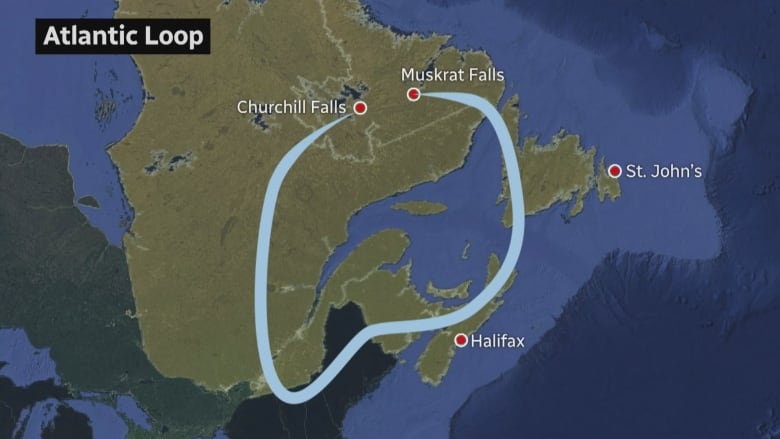
“Vitality regulators and coverage makers may do a greater job at co-ordinating throughout power techniques,” DeMarco stated. “I feel now we have to recover from our jurisdictional silos. We actually have to begin working collectively extra.”
However she, too, thinks it’s attainable.
“I feel Canada has all the correct substances to not simply to catch up [on net-zero electricity], however to guide.”
